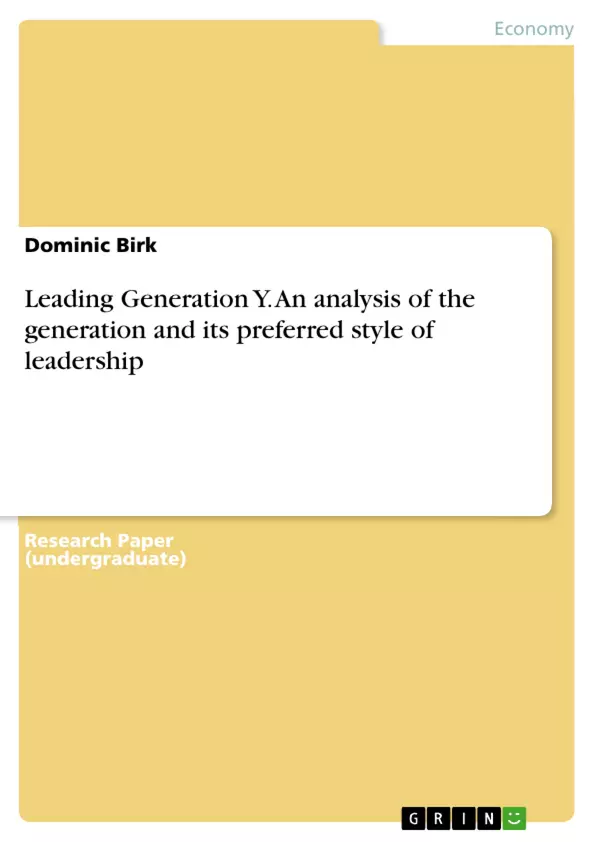This assignment examines the target group of Generation Y – a new and already much discussed age group, which begins to shape the labor market with their specific values, expectations and attitudes. Hereby the focus will be on the style of leadership that this generation needs in order to answer the question how companies have to adapt to maintain or become attractive for the young generation in the war for talents.
In order to answer this question, the mentioned generation will be defined and then characterized in order to create a common understanding of the wording. The third chapter will afterwards outline several leadership theories and their main characteristics and ideas.
The second part of the third chapter will then focus on the various needs and preferences of Generation Y and their impact on the corporate world:
1. Which traits make a leader a good leader?
2. Which leadership style matches their preferences best?
3. How should a leader adapt the working environment?
After addressing and answering those questions, a recapitulation will be done and further research suggestions will be given.
Inhaltsverzeichnis (Table of Contents)
- Introduction
- Problem Definition and Objective
- Structure
- Generation Y
- Definition of Generation Y
- Characteristics, values and performance
- Generation-Specific Leadership
- Leadership Theory
- A new Definition of Business Leadership
- The ideal leader traits according to Generation Y
- The ideal style of leadership for Generation Y
- Adapting working conditions for Generation Y
- Conclusion and Outlook
Zielsetzung und Themenschwerpunkte (Objectives and Key Themes)
This study examines the characteristics and preferences of Generation Y in the workplace and investigates the implications for leadership styles. It aims to define an effective leadership approach for this specific generation and identify strategies for adapting working conditions to their needs.
- The changing demographics and the “War for Talents” phenomenon.
- The defining characteristics, values, and performance expectations of Generation Y.
- The development and application of leadership theories in the context of Generation Y.
- The ideal leader traits and preferred leadership styles according to Generation Y.
- Strategies for adapting working conditions to meet the expectations of Generation Y.
Zusammenfassung der Kapitel (Chapter Summaries)
- Introduction: This chapter introduces the “War for Talents” phenomenon and its underlying demographic shift, highlighting the growing importance of attracting and retaining Generation Y employees. It also outlines the structure of the study.
- Generation Y: This chapter defines Generation Y, explores its key characteristics, values, and performance expectations, and analyzes its impact on the workplace.
- Generation-Specific Leadership: This chapter reviews existing leadership theories and proposes a new definition of business leadership tailored to the needs of Generation Y. It examines the ideal leader traits, preferred leadership styles, and necessary adaptations to working conditions for this generation.
Schlüsselwörter (Keywords)
Generation Y, leadership, leadership styles, talent management, demographics, workplace adaptation, values, performance expectations, "War for Talents", ideal leader traits, preferred leadership style, working conditions.
- Arbeit zitieren
- B.A. Dominic Birk (Autor:in), 2016, Leading Generation Y. An analysis of the generation and its preferred style of leadership, München, GRIN Verlag, https://www.hausarbeiten.de/document/323363


